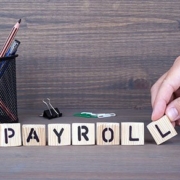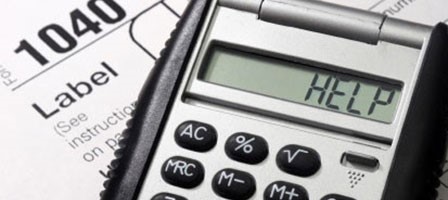Reconstructing Individual Financial and Tax Records
- Learn how to prepare financial records in advance of unanticipated events.
- Find out how to use cloud storage for important financial and tax records.
- Learn how to obtain copies of tax returns or return transcripts.
- Find out how to get records of personal residence and real property.
- Learn how to find the value of vehicles.
- Discover ways to document personal property.
- Find suggestions for recovering lost business records.
Hurricanes, fires, floods, tornadoes, and other unanticipated events can all destroy tax and financial records and require taxpayers to reconstruct financial records lost during such a tragedy or disaster. Individuals will need these records to prove any deductible tax loss from such events, for insurance reimbursement or to get federal assistance in case of a disaster.

Advance preparedness – Save financial records (and all records!) in the cloud
If you are reading this article before having a document reconstruction problem, then you might consider digitizing important documents and storing them offsite in a secure location, such as a bank safe deposit box, or a cloud storage service. This also includes your family photos and videos that might be destroyed in a tragedy or disaster, especially if your home or business is in an area prone to disasters. You may already have many of your records stored in digital format by your bank, investment broker, and other online services that you already use.
However, for those records and documents not already digitized, the IRS suggests the following steps taxpayers can take to reconstruct their records:
Copies of tax returns or return transcripts
Taxpayers who need to replace copies of their tax returns can usually obtain copies from their tax preparer. Alternatively, they can obtain return transcripts or copies of their past federal returns from the IRS. Return transcripts show most line items from an original Form 1040 tax return, along with any forms and schedules. The IRS can provide return transcripts for the current and three prior tax years. However, a return transcript doesn't show changes made after the original filing of the return.
Tax return transcripts usually meet the needs of most lending institutions offering mortgages. Taxpayers who need return transcripts can get them by:
- Visiting the Get Transcript tool on IRS.gov.
- Ordering transcripts by phone by calling 800-908-9946 and following the prompts.
- Requesting transcripts of previous years’ returns by mail by filing Form 4506-T, Request for Transcript of a Tax Return.
- Requesting copies of past returns by mail by filing Form 4506, Request for Copy of Tax Return.
- If you request records as the result of a declared disaster, write the appropriate disaster designation, such as “CA WILDFIRES,” in red letters across the top of Forms 4506-T and 4506 to expedite processing and waive the normal user fee.
Note: The primary spouse on a joint return must make the request when getting copies of returns by mail or by phone.
Taxpayers should check with their state tax agency for the procedure to obtain copies of past years’ state returns.
Records of personal residence and real property
Real property, also called real estate, is the land as well as generally anything built on, growing on, or attached to the land.
- Take photographs or videos as soon after the disaster as possible. This helps establish the extent of the damage.
- Contact the title company, escrow company, or bank that handled the purchase of the home to get copies of the appropriate documents. Real estate brokers may also be able to help.
- Use the current property tax statement for land-versus-building ratios if available. Owners can usually get copies from the county assessor’s office if they are unavailable.
- Establish the fair market value of the home by reviewing comparable sales within the same neighborhood. You can find this information by contacting an appraisal company or visiting a website that provides home valuations.
- Check with the mortgage company for copies of appraisals or other information they may have about fair market value in the area.
- Review insurance policies, as they usually list the value of a building, establishing a base figure for replacement value insurance. For details on how to reach the insurance company, check with the state insurance department.
- If you made improvements to the home, contact the contractors who did the work to see if they can give you records. If possible, get statements from the contractors verifying their work and cost as this will provide a basis in addition to the original acquisition cost of the property.
- Request written accounts from friends and relatives who saw the house before and after any improvements. Also, ask if any of them have photos taken at get-togethers.
- If there is a home improvement loan, get paperwork from the institution that issued the loan. The amount of the loan may help establish the cost of the improvements.
- For inherited property, check court records for probate values. If a trust or estate existed, contact the attorney who handled the estate or trust.
- If no other records are available, check the county assessor’s office for old records that might address the value of the property.
Vehicles
Several resources can help determine the current fair market value of most cars on the road. These resources are all available online and at most libraries:
- Kelley Blue Book
- National Automobile Dealers Association
- Edmunds
Additionally, call the dealer where the car was purchased and ask for a copy of the contract. If this is not available, give the dealer all the facts and details, and ask for a comparable price figure. If making payments on the car, check with the lien holder.
Personal property
This category includes household goods, appliances, and furniture; clothing; jewelry; and artwork. It can be difficult to reconstruct records showing the fair market value of some types of personal property. Here are some things to consider when cataloging lost items and their values:
- Look on mobile phones for pictures that were taken in the home that might show the damaged property in the background before the disaster.
- Check websites that can help establish the cost and fair market value of lost items.
- Support the valuation with photographs, videos, canceled checks, receipts, or other evidence.
- If items were purchased using a credit card or debit card, contact the credit card company or bank for past statements. Credit card companies and banks often provide users access to these statements online.
If there are no photos or videos of the property, a simple method to help remember what items were lost is to sketch pictures of each room that was impacted:
- Draw a floor plan showing where each piece of furniture was placed – including drawers, dressers, and shelves.
- Sketch pictures of the room looking toward any shelves or tables showing their contents.
- These do not have to be professionally drawn, just functional.
- Take time to draw shelves with memorabilia on them.
- Be sure to include garages, attics, closets, basements, and items on walls.
Business financial records
The following suggestions may help recover information for businesses:
- Check with your Fiducial office for copies of the financial records used to prepare your business returns.
- To create a list of lost inventories, get copies of invoices from suppliers. Whenever possible, the invoices should date back at least one calendar year.
- Check mobile phones or other cameras for pictures and videos of buildings, equipment, and inventory.
- For income information, get copies of bank statements. The deposits should closely reflect what the sales were for any given period.
- Get copies of last year’s federal, state, and local tax returns. This includes sales tax reports, payroll tax returns, and business licenses from the city or county. These will reflect gross sales for a given period.
- If there are no photographs or videos available, sketch an outline of the inside and outside of the business location. Then start to fill in the details of the sketches. For example, for the inside of the building, record where equipment and inventory were located. For the outside of the building, map out the locations of items such as shrubs, parking, signs, and awnings.
- If the business was pre-existing, go back to the broker for a copy of the purchase agreement. This should detail what was acquired.
- If the building was newly constructed, contact the contractor or a planning commission for building plans.
Have questions or need assistance in claiming a disaster loss on your tax return? Call Fiducial at 1-866-FIDUCIAL or make an appointment at one of our office locations to discuss your situation.
Ready to book an appointment now? Click here. Know someone who might need our services? We love referrals!









